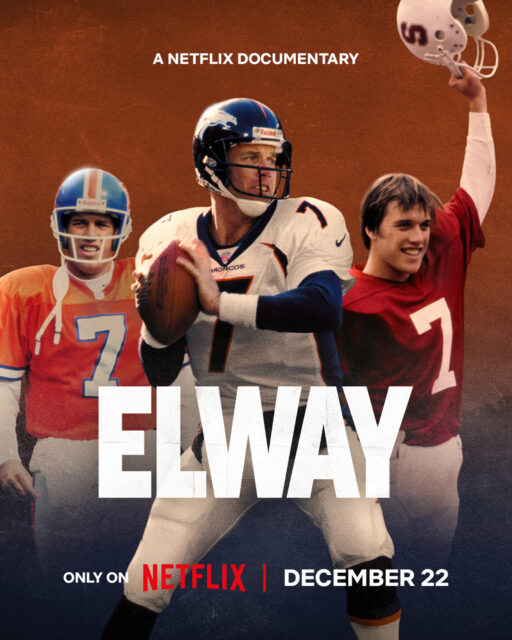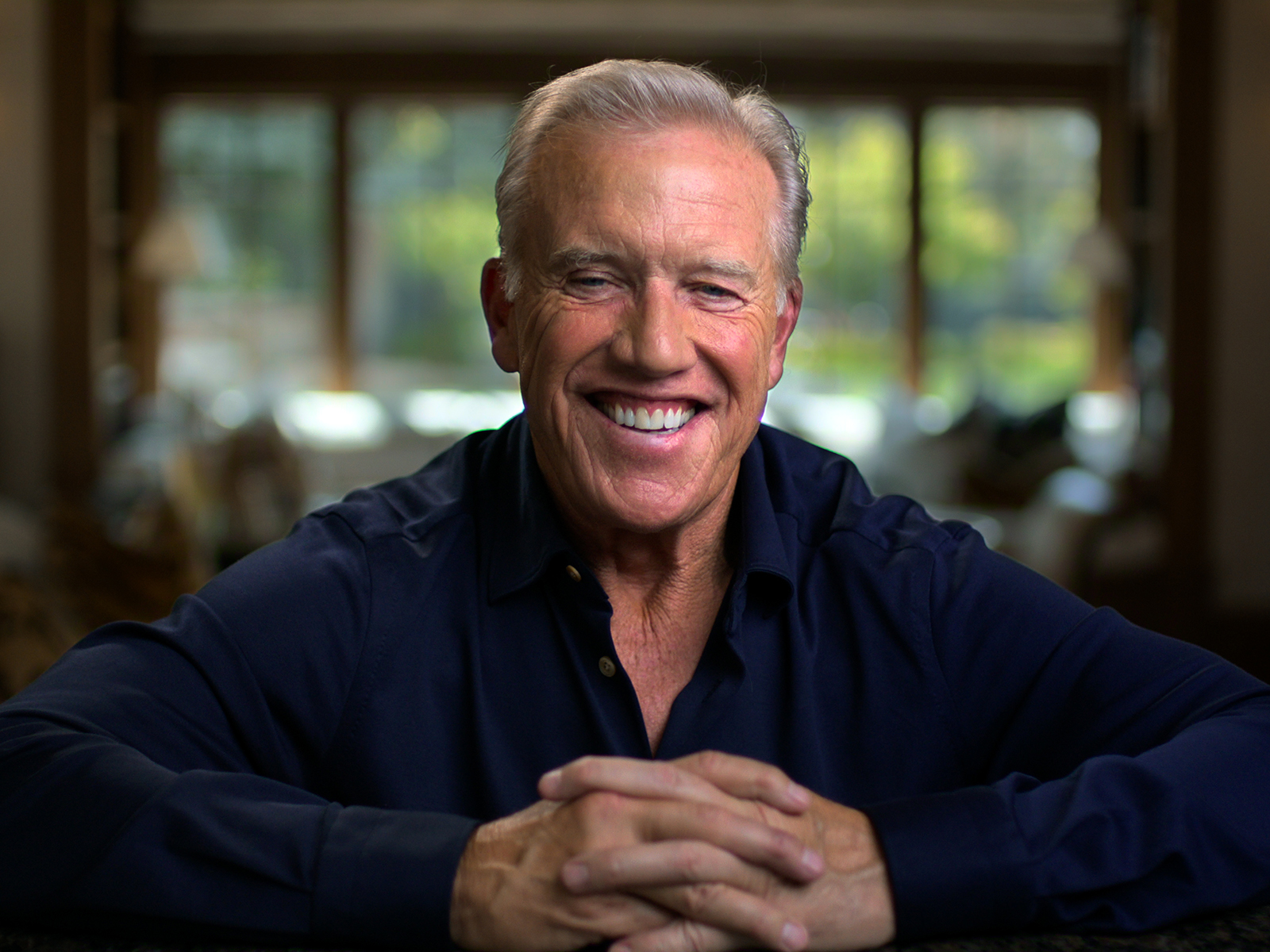The Local newsletter is your free, daily guide to life in Colorado. For locals, by locals.
Following John Elway’s retirement in 1998, Tom Brady won six Super Bowls, Peyton Manning set a laundry list of records, and Patrick Mahomes starred in a thousand State Farm commercials. So as heretical as it might seem to Denver Broncos fans, “there’s a whole generation of NFL fans who have no idea who Elway is,” says filmmaker Ken Rodgers, “and that, for a certain time, his picture was there when you looked up quarterback in the dictionary.”
Elway, a new documentary premiering on Netflix December 22, aims to restore his status. Co-directed by Rodgers and fellow NFL Films veteran Chris Weaver, the film spans the entirety of Elway’s 16-year career—entirely in Denver—from being benched in favor of Steve DeBerg to losing three Super Bowls to, finally, bringing back-to-back championships to the Mile High City.
But Rodgers argues that Elway’s contributions to Denver went far beyond the football field. “I’m not sure there’s a stronger representation of a city in the NFL by a player than Elway and Denver,” Rodgers says. “There are other players who played their whole careers in towns like John, but they don’t quite fit the culture as perfectly as Elway fits Denver.”
Before the release of the film, 5280 spoke with Rodgers about what made Elway such a unique quarterback, why he gets overlooked, and his enduring connection to the Mile High City.
Read More: 2010: Elway Alone
Editor’s note: The following conversation has been edited for length and clarity.

5280: How do you think John Elway’s connection to his team’s city differs from that of some of his legendary peers?
Ken Rodgers: Elway wasn’t in a coastal city full of glitz like Joe Montana or Dan Marino. He sort of represents the frontier nature of Denver, of being out on your own, away from the rest of the NFL. He became a sort of mythical figure. He was like John Wayne.
Elway wasn’t really recognized for his greatness until the end of his career. He was seen as an incredible quarterback, but not winning a Super Bowl was the mark against him. Then when you put his career in the context of the two Super Bowls [1998 and 1999], you realize he was always that guy. In that way, it’s part of the mythos of America. We don’t want easy success. The story we like better is a long road of hardship and eventually reaching your goal. That comes from the westward expansion and cowboy culture. And John just fits that perfectly. If he won one of those early Super Bowls, his journey, and the film, would not be as powerful.
How did the relationship between Elway and Denver evolve?
Anyone who doesn’t know his story previous to 1983 believes he just is Denver. That he grew up in Denver. He went to college in Denver. But he was a Pacific Northwest kid who went to high school in Southern California. He was an LA guy who went to Stanford. He even had surfer hair. He did not look like a Denver icon until he arrived in Denver. Then he transformed with the city.
He helped transform the city’s identity into a more refined modern-day frontier. The roughness, the toughness, the ability to go through hard times, is still there. But you can have skill and panache. It’s not about spitting on the floor. It’s about throwing touchdowns with your golden arm. He fit perfectly and updated Denver’s image of itself.
Did Denver take to him immediately?
He was embraced early, which made sense because he was a superstar. But for him to embrace the city back, that goes back to his childhood and never really having a set home. He moved around often in his childhood because of his father’s coaching career. When he got to Denver, it’s very clear he never wanted to leave.
I’m not sure who represented Denver before John Elway. But since 1983, I think John Elway is the face of Denver, and probably Colorado for most of the country.
What was he like during filming?
We would finish shooting, and he would be going out to meet friends. He’s still the guy who showed up in 1983 in many ways. He has this admirable ability to connect with anyone. He doesn’t have the temperament of a superstar who avoids people and sets himself apart. He feels comfortable enough in Denver to go anywhere. To talk with anyone.
Why do you think NFL fans have forgotten about Elway?
Thanks to social media, podcasts, and access documentaries, you don’t wonder what Tom Brady is doing. You see him all the time. Elway was out in the middle of the country. You saw his highlights and said, “Wow, that guy’s an incredible quarterback.” But you didn’t know what he was doing in his personal life. You didn’t understand where he came from. You might get an article on him to learn some backstory. But the architecture of the sports world was different. People were not consuming the culture of players the way they are today.
That’s part of the reason why he is this unknown, mythical figure. People will watch this film and realize that there was a whole life and journey happening off the field that they didn’t see in the 30-second clip that they caught each week of John Elway. But that’s also another reason why he represents Denver and Colorado so well. All he wanted to do was play football, represent his city, and love his family. It didn’t go much further than that.
Watch Elway on Netflix beginning December 22.










